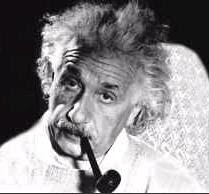.
Many other types of interactions between matter and elementary particles are used in detectors. Thus in semiconductor detectors, electron-hole pairs that elementary particles produce in a semiconductor junction momentarily increase the electric conduction across the junction. The Cherenkov detector, on the other hand, makes use of the effect discovered by the Russian physicist Pavel Alekseyevich Cherenkov in 1934: A particle emits light when it passes through a nonconducting medium at a velocity higher than the velocity of light in that medium (the velocity of light in glass, for example, is lower than the velocity of light in vacuum). In Cherenkov detectors, materials such as glass, plastic, water, or carbon dioxide serve as the medium in which the light flashes are produced. As in scintillation counters, the light flashes are detected with photomultiplier tubes.
Neutral particles such as neutrons or neutrinos can be detected by nuclear reactions that occur when they collide with nuclei of certain atoms. Slow neutrons produce easily detectable alpha particles when they collide with boron nuclei in borontrifluoride. Neutrinos, which barely interact with matter, are detected in huge tanks containing perchloroethylene, a dry-cleaning fluid). The neutrinos that collide with chlorine nuclei produce radioactive argon nuclei. The perchloroethylene tank is flushed at regular intervals, and the newly formed argon atoms, present in minute amounts, are counted. This type of neutrino detector, placed deep underground to shield against cosmic radiation, is currently used to measure the neutrino flux from the sun. Neutrino detectors may also take the form of scintillation counters, the tanks in this case being filled with an organic liquid that emits light flashes when traversed by electrically charged particles produced by the interaction of neutrinos with the liquid's molecules.
The detectors now being developed for use with the storage rings and colliding particle beams of the most recent generation of accelerators are bubble-chamber types known as time-projection chambers. They can measure three-dimensionally the tracks produced by particles from colliding beams, with supplementary detectors to record other particles resulting from the high-power collisions. The Fermi National Accelerator Laboratory's CDF (Collision Detector Fermilab) is used with its colliding-beam accelerator (see Particle Accelerators) to study head-on particle collisions. CDF's three different systems can capture or account for nearly all of the subnuclear fragments released in such violent collisions.
Many other types of interactions between matter and elementary particles are used in detectors. Thus in semiconductor detectors, electron-hole pairs that elementary particles produce in a semiconductor junction momentarily increase the electric conduction across the junction. The Cherenkov detector, on the other hand, makes use of the effect discovered by the Russian physicist Pavel Alekseyevich Cherenkov in 1934: A particle emits light when it passes through a nonconducting medium at a velocity higher than the velocity of light in that medium (the velocity of light in glass, for example, is lower than the velocity of light in vacuum). In Cherenkov detectors, materials such as glass, plastic, water, or carbon dioxide serve as the medium in which the light flashes are produced. As in scintillation counters, the light flashes are detected with photomultiplier tubes.
Neutral particles such as neutrons or neutrinos can be detected by nuclear reactions that occur when they collide with nuclei of certain atoms. Slow neutrons produce easily detectable alpha particles when they collide with boron nuclei in borontrifluoride. Neutrinos, which barely interact with matter, are detected in huge tanks containing perchloroethylene, a dry-cleaning fluid). The neutrinos that collide with chlorine nuclei produce radioactive argon nuclei. The perchloroethylene tank is flushed at regular intervals, and the newly formed argon atoms, present in minute amounts, are counted. This type of neutrino detector, placed deep underground to shield against cosmic radiation, is currently used to measure the neutrino flux from the sun. Neutrino detectors may also take the form of scintillation counters, the tanks in this case being filled with an organic liquid that emits light flashes when traversed by electrically charged particles produced by the interaction of neutrinos with the liquid's molecules.
The detectors now being developed for use with the storage rings and colliding particle beams of the most recent generation of accelerators are bubble-chamber types known as time-projection chambers. They can measure three-dimensionally the tracks produced by particles from colliding beams, with supplementary detectors to record other particles resulting from the high-power collisions. The Fermi National Accelerator Laboratory's CDF (Collision Detector Fermilab) is used with its colliding-beam accelerator (see Particle Accelerators) to study head-on particle collisions. CDF's three different systems can capture or account for nearly all of the subnuclear fragments released in such violent collisions.

